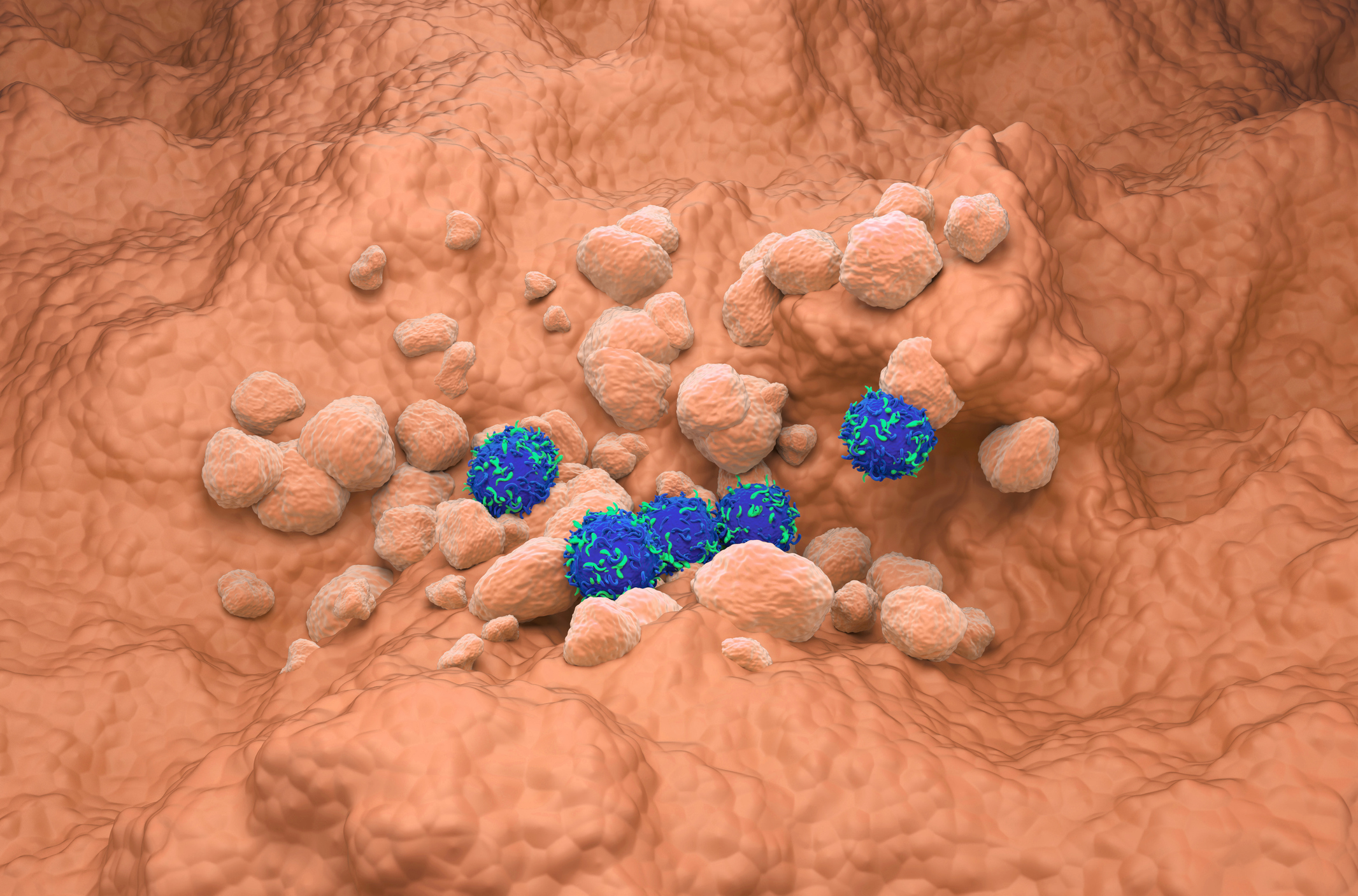In Switzerland, over 4000 people are diagnosed with bowel cancer every year. It does not cause any symptoms for a long time, so early detection is particularly important. Another component is influencing the signaling pathway in order to improve the prognosis. Urothelial carcinoma affects almost 1400 people in Switzerland every year. Combination therapies could be effective here, as current study results suggest.
Gastrointestinal cancers (upper/lower GI and hepatobiliary cancers) cause more cancer deaths than any other body system. Activation of the Wnt signaling pathway favors common gastrointestinal cancers, but it is difficult to influence this signaling pathway with certainty. Inhibition of porcupine, an enzyme essential for Wnt ligand activity, has the clinical potential to suppress Wnt in a safe and tolerable manner. Preclinically, GI tumors with variants of the upstream Wnt signaling pathway (RNF43 loss of function [LoF], RSPO gain of function [GoF]) are dependent on Wnt ligands and particularly sensitive to RXC004, a small molecule porcupine inhibitor. Using Caris data, 278 649 human tumor samples (from all 58 solid tumor lines) were analyzed for the prevalence of upstream Wnt pathway variants and associated features [1].
The prevalence of RNF43_LoF, RSPO2_GoF and RSPO3_GoF was 1.3%, 0.1% and 0.3% in all lines; it increased to 3.6%, 0.2% and 0.9% in the GI lines. The most common cancer types in terms of combined Wnt ligand-dependent prevalence were colorectal cancer: small bowel (9.6%), colorectal cancer (CRC; 5.9%), pancreas (5.4%) and stomach (4.3%). Of 15025 CRC cases, 13886 (92%) were microsatellite stable (MSS). Among the MSS cancer cases, the prevalence of RNF43_LoF was 2.6% and of RSPO2/3_GoF 1.6%; the overall prevalence was therefore 4.2%. BRAF_V600E occurred more frequently in MSS cancer cases that were dependent on Wnt ligands (42%) than in WT cases (3.4%). In MSS cancers, upstream Wnt variants were associated with poor prognosis either in all cases or in BRAF_WT cases compared to WT cases.
Combination therapy for urothelial carcinoma
Niraparib (N) is a (PARP)-1/-2 inhibitor (inh) and cabozantinib (C) is a receptor tyrosine kinase (RTK) inhibitor targeting multiple RTKs (c-MET, TYRO3, AXL, MER). It has been suggested that aberrant c-MET activation may reduce the response to PARP inhibitors (PARPi).
Preclinical data show that the inhibition of c-Met makes the cells more sensitive to PARPi. The safety of N + C was investigated in advanced clear cell renal cell carcinoma or metastatic urothelial carcinoma (mUC). Data are now available on the safety and efficacy in an expansion cohort of mUC [2].
Patients with a confirmed histopathological diagnosis of mUC (phase II) who had previously been treated with at least two prior therapies, one of which was platinum-based, and an ECOG score of 0-2 were included. Adequate bone marrow, liver and kidney functions were required. The patients received N/C 100/40 mg p.o. once daily in 28-day cycles.
First interim data evaluated
The first interim analysis includes 44 mUC patients. The average age was 67 years and 98% of the patients were male. All patients had received platinum-based treatment and 80% had received immunotherapy. The median number of cycles administered is 3, and 13 patients are still undergoing treatment at the time of this analysis. The disease control rate was 47.7% and the ORR was 15.9%. With a median follow-up time of 5.9 months, the median progression-free survival (PFS) and overall survival were 3.8 and 8.7 months respectively; the 6-month PFS was 31%. The most common adverse events of all severities included: asthenia (71%), hypertension (43%), diarrhea (27%), constipation (27%), anemia (25%) and palmar-plantar erythrodysesthesia (23%). It was therefore shown that the combination of N 100 mg/d + C 40 mg/d can be administered safely and is clinically effective in an unselected, heavily pretreated population according to biomarkers.
Combination therapy for colorectal cancer
Unlike other cancers that respond to single agents, such as lung cancer and chronic myeloid leukemia, colorectal cancer (CRC) involves a complex network of interactions between activating oncogenes and is therefore more likely to respond to multi-target therapy. About 10% of CRC mutations are located within the BRAF gene, with BRAFV600E being the most common. While this mutation can be addressed with relatively high efficacy by single-target therapies, there is a cohort of atypical BRAF mutations that result in higher resistance to currently available treatments. In addition, a large proportion of these atypical BRAF mutations are poorly understood.
Principal component analysis and semi-supervised clustering learning methods were used to classify mutants that were not assigned by the previous BRAF classification system [3]. By utilizing already established protein-protein networks, this was overlaid with gene essentiality data to successfully classify 84 new BRAF mutations.
It was shown that atypical BRAF mutations have significantly more positive CERES scores than class 1 mutations and must therefore cooperate with other oncogenes to drive oncogenesis due to their lower oncogenic potential. Several key genes (including PIK3CA, EGFR and MEK) have been identified as potential drug targets for cell lines with atypical BRAF class 2 and 3 mutations. Finally, the former Yao classification system was expanded to create a more comprehensive BRAF mutant classification system, the Yao Classification System Plus, which includes more atypical BRAF mutations.
Congress: ESMO 2023
Literature:
- Cook N, et al: Therapeutic opportunities for porcupine inhibition in gastrointestinal cancer. 222P. 21.10.2023. ESMO congress 2023.
- Castellano Gauna DE, et al: Phase I-II study of niraparib plus cabozantinib in patients with advanced urothelial/kidney cancer (NICARAGUA trial). 2366P. 23.10.2023. ESMO congress 2023.
- Madduri AB, et al: Extending a classification system for atypical BRAF mutations to improve targeted therapies in colorectal cancer cells. 27P. 22.10.2023. ESMO congress 2023.
InFo ONKOLOGIE & HÄMATOLOGIE 2023; 11(6): 18 (published on 16.12.23, ahead of print)












